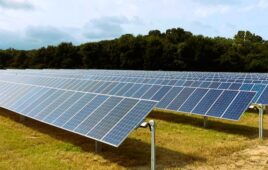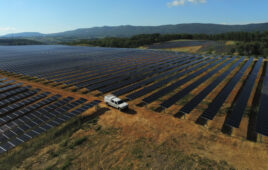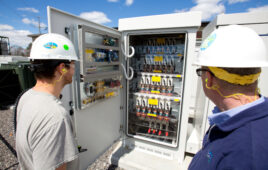Renewable energy developer rPlus Energies has signed a long-term power purchase agreement (PPA) with electric utility PacifiCorp for a 400-MWAC solar project integrated with a 200-MW battery energy storage system (BESS) in Emery County, Utah. The Green River Energy Center is currently the largest planned solar + storage facility in Utah and one of the largest facilities in the PacifiCorp system.
“Emery County, Utah, has been an energy community for a long time,” said Luigi Resta, president and CEO of rPlus Energies. “With the Huntington and Hunter plants due to reach end of useful life over the next 10 to 20 years, the fabric of the county is rapidly transforming. The Green River Energy Center continues the legacy of pioneering change and discovery in the region.”
rPlus Energies has selected Sundt Construction to provide the engineering, procurement and construction services for the solar + storage facilities. Construction will commence in early 2023 and is expected to create over 400 jobs as well as multiple permanent positions.
In addition to increased job opportunities and using construction-related firms in the surrounding area, Green River Energy Center represents a roughly $750 million investment in Utah’s economy and will provide substantial tax benefits to Emery County.
“We appreciate the opportunity to work with valued customers like rPlus Energies in helping to provide solutions to meet renewable energy goals,” said Craig Eller, vice president of business policy development for Rocky Mountain Power. “We look forward to our continued partnership and future collaboration.”
The Green River project adds to rPlus Energies’ recent project development achievements in Utah, including the 80-MW Graphite Solar project in Carbon County, which achieved commercial operation in June, and the 200 MW Appaloosa Solar 1 project in Iron County, which commenced construction earlier in 2022. Both projects hold long-term PPAs with PacifiCorp under Rocky Mountain Power’s Schedule 34 green energy tariff, which lets large customers purchase renewable energy generated on their behalf.
The addition of the Green River PPA brings rPlus Energies’ total contracted renewable generation capacity to over 1.2 GW, all executed since the organization formed in late 2018.
News item from rPlus Energies





The back story on the rote IOU electric utility commodity fueled generation systems is the point of when a fueled generation facility is running on “standby reserve”. Often not talked about is the design of these fueled plants both coal fired and natural gas fired is the emissions systems, scrubbers, bag filters etc. are designed for over 50% to 75% output. While running for hours a day waiting to ramp up and connect to the grid, the emissions are higher than a plant running at 90% to 100%. The fuel charges bundled into the retail electric bill is being paid by the residential sector whether the “standby reserve” plant is put online or (not), inefficient operations passed onto the end users.
This site is said to be 400MWac and using just a conservative 4 sun hours a day would produce 1.6GWh of energy a day. By enhancing the energy storage capacity of this site to 400MWh or even a little more, would allow high overgeneration days to be captured for nighttime capacity without curtailing this non-commodity energy resource and not need fueled generation running 24/7 belching out high emissions, costing the ratepayers more in “fuel charges” just for “standby reserve” mode of operations. At night that 400MWh plus ESS could also grab fueled generation off of the grid and save it for early morning peaks between 6AM and 9AM every day. Even nuclear plants that don’t readily ramp up and ramp down could feed (very large) ESS facilities making the nuclear plant capable of running at the most efficient generation level, usually around 95% to 105% and the smart ESS facility would ramp around the grid demands in milliseconds to seconds to stabalize and regulate the grid.